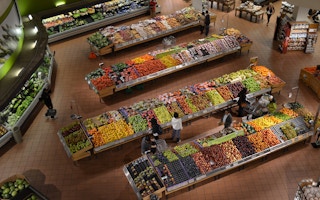What if you could know exactly where the fish on your plate came from, through an app on your smartphone? What if you could instantaneously send money to an Ecuadorian farmer for protecting trees on her land?
The ability to transfer and track items of value instantaneously is remarkable, but it faces steep hurdles to scale up: hacking, local corruption, and a patchwork of policies and technological platforms.
Now, however, a promising breakthrough could potentially revolutionize conservation in the process.
The technology is called “blockchain” — a digital ledger of transactions that can record virtually everything of value while ensuring these transactions are incorruptible and completely transparent.
Recently, a group of technologists, venture capitalists, academics and philanthropists gathered at the Blockchain 2017 Summit to devise ways to use the new technology as a solution to multiple social and environmental problems.
Blockchain can seem daunting — and even at times magical. During the summit, it felt like I was witnessing the genius of the early days of the internet as tech experts discussed file transfer protocols and distributed networks. In fact, the technology of blockchain has been compared to the creation of the internet for the extraordinary impact it could have on how we transfer things of value to each other.
So, how would we actually use blockchain in conservation? A few ideas emerged at the summit.
First: Use blockchain to trace high-value commodities. When you purchase coffee or products made with palm oil, for example, you rely on certification to tell you whether or not the product is sustainably sourced. Increasingly, consumers want to know more: Where exactly did their seafood come from? Is the certificate on that product trustworthy?
Blockchain would help answer those questions by tracking each stage of a commodity from its original source to the product you buy in the store. Blockchain is being used in this way by UK non-profit Provenance in a pilot program aimed at improving tuna traceability in Indonesia, an issue that has gained global attention as countries joined together to launch the Tuna Traceability Initiative at the U.N. World Ocean Conference earlier this year.
Second: Use blockchain to increase the scale and efficiency of conservation payments. Through Conservation International’s (CI) Conservation Stewards Program, countries are working with rural communities to provide incentives in the form of small cash payments in exchange for conserving nature.
A key challenge these types of programs, such as Socio Bosque in Ecuador, is the need for quick verification of the conservation contract, and getting the cash to rural communities in a timely and efficient manner. For example, community members in rural Ecuador may spend more money on transportation costs to get to the bank to collect their conservation payment than the value of the payment itself.
Blockchain could help by providing efficient contract verification (“smart contracts”) and securing mobile payments that would send instant receipts.
Technology isn’t the silver bullet for conservation challenges, and CI recognizes this. While blockchain solutions to conservation challenges are very much in their infancy, the possibilities are boundless, and we are only limited by our imagination.
Jennifer Morris is the president of Conservation International. This post is republished from the Conservation International blog.


















